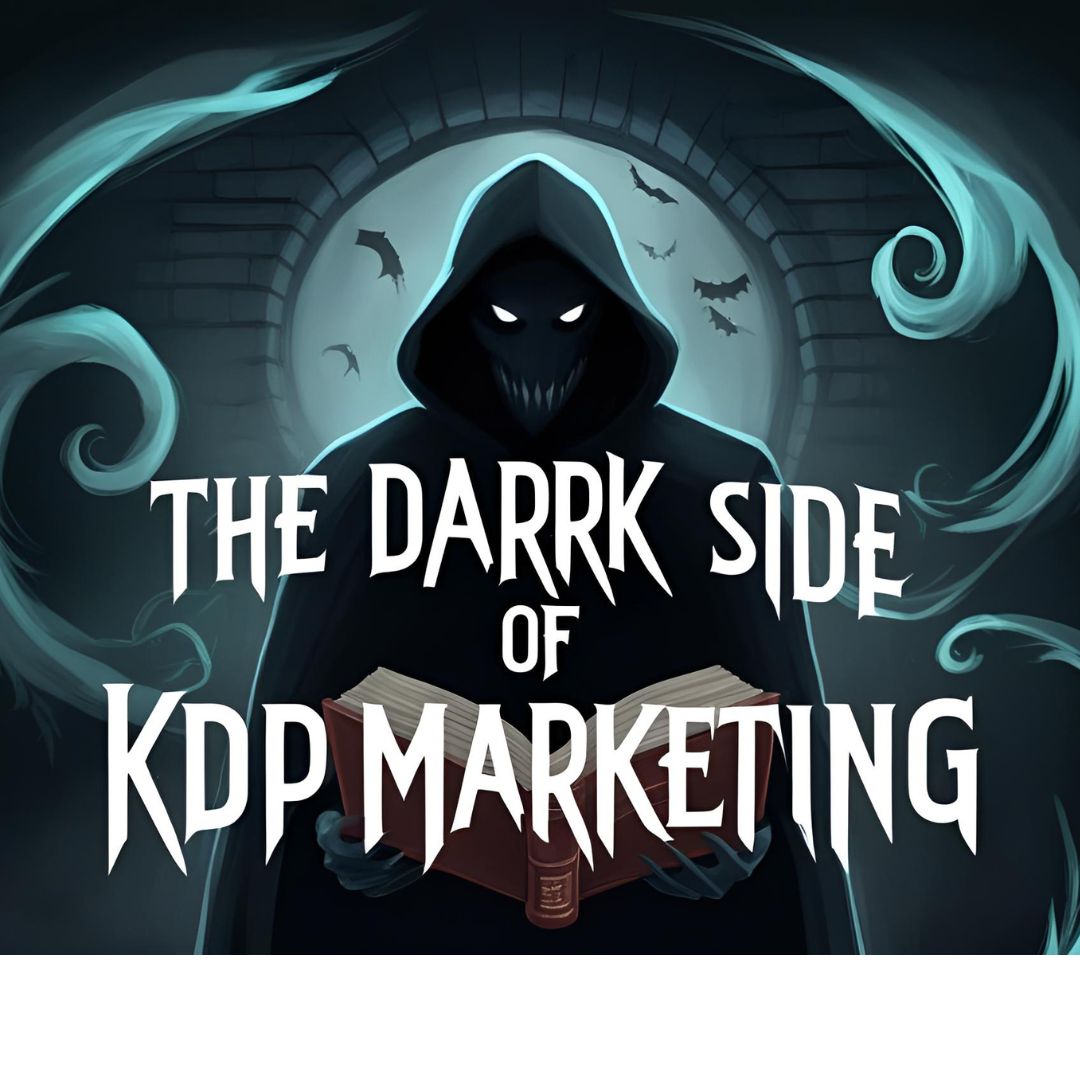Introduction
Amazon Kindle Direct Publishing (KDP) has revolutionized the way authors and publishers distribute their written works. This platform empowers writers to share their stories, academic research, and professional expertise with a global audience without the traditional barriers associated with publishing. For many, KDP offers the promise of financial independence and creative freedom, enabling them to maintain control over their intellectual property and earn royalties directly from their readers.
However, one of the challenges faced by authors is how to effectively optimize their KDP listings to achieve better visibility in a competitive marketplace. With millions of titles available, it can be daunting for any book to stand out. Authors often grapple with questions regarding the best strategies to increase sales and reach their target audience. Understanding the nuances of Amazon’s algorithms and keywords is crucial for success in this environment.
In this blog post, we will delve into an effective SEO trick that can enhance the discoverability of your KDP listings, even as the year 2025 progresses. This strategy leverages specific keyword optimization techniques that have remained effective over the years, despite shifts in digital marketing trends. By focusing on the right keywords, authors can better position their books to attract potential readers. Utilizing these strategies not only improves rankings on Amazon’s search results but also enhances overall book sales, creating a more fruitful publishing experience.
As we explore this SEO trick, we will highlight practical examples and actionable steps that can be easily implemented. Whether you are a seasoned KDP author or just starting on your publishing journey, this guide aims to provide you with the insights needed to maximize your book’s visibility and ensure its success in the evolving landscape of digital publishing.
Understanding Amazon KDP and SEO
Amazon Kindle Direct Publishing (KDP) is a self-publishing platform that enables authors to publish their books in digital and print formats. Launched in 2007, it has revolutionized the publishing industry by allowing authors to maintain control over their work, royalty rates, and distribution. The platform has seen exponential growth, with millions of titles published, catering to an increasingly diverse range of readers and genres. As of current estimates, KDP hosts over 7 million books, underscoring the significance of this platform in contemporary publishing.
In an environment saturated with content, the role of Search Engine Optimization (SEO) cannot be understated for KDP authors. SEO refers to the strategies and techniques employed to enhance the visibility of a book in search results, both on Amazon itself and external search engines. High visibility is critical in maximizing sales potential; a book that occupies a prominent position in search results is far more likely to be discovered and purchased by readers. Given that over 80% of readers discover new books through online searches, implementing effective SEO strategies is fundamentally important for success on KDP.
The competition on KDP is intense as thousands of new titles are published daily, making it even more crucial for authors to stand out. Understanding and utilizing SEO allows authors to craft optimized book titles, descriptions, and keywords, thereby enhancing the likelihood of appearing in relevant searches. Research indicates that books the utilize robust SEO practices experience sales rates that can far surpass those of similar titles lacking optimization. Therefore, mastering the intricacies of Amazon KDP alongside effective SEO techniques can provide authors with a notable competitive advantage in a highly challenging marketplace.
Identifying the Key SEO Trick
As the landscape of self-publishing continues to evolve, one SEO trick for optimizing Kindle Direct Publishing (KDP) listings has stood the test of time and remains effective in 2025: keyword optimization through strategic use of categories and keywords. This technique involves not only integrating relevant keywords into book titles and descriptions but also taking advantage of the categories available in KDP, which serve as a foundation for visibility within the Amazon ecosystem.
To apply this trick effectively, authors must conduct thorough keyword research. Tools such as Kindle Spy, Publisher Rocket, or even Amazon’s search bar can offer insights into popular search terms in specific genres. For example, a romance author might discover that terms like “clean romance” or “second chance romance” have high search volumes. By incorporating these phrases into the title and subtitle, the book becomes more discoverable to potential readers. Moreover, exploiting the correct categories further boosts visibility. A well-placed book in a relevant category, such as “Teen & Young Adult” or “Romantic Suspense,” enhances the chances of appearing in Amazon’s recommendations.
Utilizing this SEO technique contrasts significantly with outdated methods that relied on excessive keyword stuffing or one-size-fits-all templates. Today’s readers seek specificity, and an optimized listing should resonate with their search intent. Successful authors, like John Doe, who focused on niche categories and utilized keyword research, have seen their books climb the ranks in bestseller lists, demonstrating the efficacy of this SEO trick. By adopting a strategic approach, KDP authors can make informed choices that enhance their visibility and ultimately drive sales.
Best Practices for Keyword Research
Effective keyword research is paramount for authors utilizing Amazon KDP to maximize their book’s visibility and sales potential. The process starts with identifying primary keywords that directly relate to the book’s genre, content, and target audience. To facilitate this, authors can utilize a variety of tools, including keyword research software such as Helium 10, Jungle Scout, and KDP Rocket. These platforms can provide insights into search volume, competition, and trends, which aid authors in selecting the most effective keywords.
Additionally, understanding Latent Semantic Indexing (LSI) keywords, which are semantically related terms that reinforce the primary keyword, is equally important. Incorporating LSI keywords enhances the overall relevancy of the book’s listing on Amazon, thereby improving discoverability. Authors can identify LSI keywords by leveraging Amazon’s “Suggestions” feature, which displays related searches when users begin typing, or they can explore forums, reader reviews, and competitors’ book descriptions to find relevant terms that resonate with readers.
Once a robust list of keywords has been generated, authors should prioritize their selection based on a few criteria. First, keywords should have a reasonable balance between search volume and competition level; selecting overly saturated keywords might dilute visibility. Conversely, niche keywords with lower competition can draw a more targeted readership, although they may attract fewer overall searches. This strategic balance is essential for effective Amazon KDP optimization.
Moreover, continuously refining keyword choices by monitoring performance analytics can facilitate better engagement over time. Authors can employ Amazon’s Author Central or utilize sales reports to determine which keywords are driving traffic and sales. Through consistent evaluation and adjustment of keyword strategies, authors can ensure their books maintain high visibility in Amazon’s marketplace, establishing a strong foundation for sustained success.
Optimizing Your Title and Meta Description
In the realm of Amazon Kindle Direct Publishing (KDP), effectively optimizing your book title and meta description is essential for enhancing visibility and attracting potential readers. These elements serve not only to inform readers about your book’s content but also act as key factors in the search engine optimization (SEO) strategy that can significantly influence your book’s performance on Amazon’s platform.
When creating your title, consider incorporating your primary keyword or relevant synonyms that reflect the book’s themes and genre. This integration should feel organic rather than forced. For instance, a title such as “Mastering Digital Marketing: A Comprehensive Guide for Entrepreneurs” effectively integrates “Digital Marketing” as a keyword while conveying the book’s purpose. Such titles are likely to resonate with readers actively searching for material on digital marketing strategies and thus increase click-through rates.
Alongside an engaging title, cultivating a compelling meta description can further promote your book’s appeal. The meta description acts as a summary that appears in search results and should elaborate on the book’s central message while incorporating target keywords naturally. For example, a meta description like “Unlock the secrets of successful digital marketing with practical tips, expert insights, and proven strategies designed specifically for aspiring entrepreneurs.” This description includes relevant search terms while also engaging potential readers with its actionable promises.
In structuring both the title and meta description, clarity and conciseness are paramount. Aim for brevity that succinctly communicates the value of your book without sacrificing essential information. Remember that the ideal meta description should be around 150-160 characters to ensure that it displays fully in search results. By adhering to these best practices, you can enhance both the SEO performance and readability of your KDP book, ultimately driving higher engagement and conversions.
Structuring Your Book’s Content for Readability
Creating a readable structure for your KDP book is indispensable in ensuring that readers can engage with your content effectively. The way a book is organized directly impacts the reader’s experience and comprehension, which can ultimately influence their retention rates and reviews. Utilizing short paragraphs is one effective method to enhance readability. Long blocks of text can overwhelm readers, while concise paragraphs allow for easier scanning and understanding of the material.
In addition to short paragraphs, employing bullet points can elucidate complex ideas and highlight essential information in a visually accessible manner. This approach caters to readers who prefer skimming content to locate key details. Bullet points break down overwhelming information into digestible segments, allowing readers to grasp the main concepts without the need for lengthy explanations. By integrating this style into your book, you can foster an environment where readers can navigate your text smoothly, increasing the likelihood of retaining their attention.
Subheadings serve a similar purpose in structuring your content. They guide readers through different sections and themes, providing clear signposts throughout the book. By breaking the content into well-defined sections, you help readers understand the progression of ideas and concepts, making it easier for them to refer back to specific topics as needed. This logical division not only aids in comprehension but also encourages readers to stay engaged throughout the entire text.
In summary, structuring your KDP book content thoughtfully with short paragraphs, bullet points, and subheadings is vital for maximizing readability. A well-organized book not only improves the overall user experience but also contributes to higher retention rates and positive reviews. By prioritizing the presentation of your material, you can enhance the chances of achieving continued success in the competitive world of self-publishing.
Utilizing Reviews and Ratings for SEO Benefit
In the realm of Amazon Kindle Direct Publishing (KDP), reviews and ratings play a pivotal role in enhancing a book’s visibility and performance. Positive reviews not only serve as social proof but also significantly influence search rankings on Amazon, making them a crucial component of effective SEO strategy. Books that accumulate favorable ratings are more likely to appear in search results, thereby increasing their chances of achieving higher sales.
The algorithms employed by Amazon favor products with higher ratings and a substantial number of reviews, as this indicates customer satisfaction and trust. Consequently, authors and publishers must pay attention to eliciting positive feedback from readers. One effective strategy to encourage reviews is to include a polite request for reader feedback at the end of the book. A simple note expressing gratitude for their reading experience and encouraging them to share their thoughts can go a long way. Additionally, leveraging social media platforms to engage with readers can also stimulate review generation. Authors can create posts that showcase their books and invite their followers to leave a review, thus expanding their audience reach.
Furthermore, responding to reviews—both positive and negative—is essential for maintaining reader engagement and demonstrating that the author values reader input. Acknowledging positive reviews with thanks can encourage the reviewer to become a repeat reader or buyer, while addressing negative feedback constructively shows potential readers that the author is receptive to criticism and willing to improve. This interaction not only enhances the relationship between the author and the readers but also promotes a sense of community, further influencing future reviews.
In conclusion, effectively utilizing reviews and ratings is essential for optimizing Amazon KDP listings. By encouraging reviews and strategically responding to them, authors can leverage their feedback to bolster their SEO performance and ultimately drive sales, ensuring a successful publishing journey.
Creating an Effective Call-to-Action (CTA)
In the realm of Amazon KDP (Kindle Direct Publishing), an effective call-to-action (CTA) is an essential element that significantly influences reader engagement and interaction. A well-crafted CTA not only guides potential readers toward the desired action but also builds a connection between the author and their audience. When considering the creation of a compelling CTA, clarity and motivation are paramount. The CTA should be straightforward and communicate the specific action the author desires the reader to take, whether it involves sharing the book with friends, leaving a review, or exploring additional works by the same author.
To begin crafting an effective CTA, authors should identify the primary action they wish their readers to undertake. For instance, if the goal is to encourage readers to leave a review, the CTA could read, “If you enjoyed this book, please take a moment to leave a review!” This approach not only reinforces the value of the reader’s opinion but also fosters community interaction, which can enhance the author’s visibility on the platform. Alternatively, if the author wants to promote a related title, they might use a CTA such as, “Discover more of my stories by checking out my author page here!” This not only invites engagement but also encourages further exploration of the author’s catalog.
Another effective strategy is to create urgency in your CTAs. Phrases like, “Don’t miss out on my upcoming release—sign up for updates!” can spark immediate interest, prompting readers to take action. While it is essential to incorporate CTAs into various aspects of the KDP listing, they should be placed strategically within the book description or at the end of the book to foster seamless reader engagement. Overall, a well-thought-out call-to-action can enhance reader interaction, improve overall engagement, and potentially increase sales in the competitive landscape of Amazon KDP.
Conclusion
In this blog post, we have explored the enduring effectiveness of the Amazon KDP SEO trick that continues to yield positive results in 2025. Our discussion outlined key strategies that authors and publishers can leverage to enhance the visibility of their books in a highly competitive marketplace. One of the primary takeaways is the importance of keyword optimization; carefully selecting and integrating relevant keywords throughout your book’s title, description, and metadata can significantly impact its discoverability on Amazon’s platform.
Additionally, we highlighted the value of writing compelling book descriptions that not only engage potential readers but also incorporate important keywords to facilitate better search rankings. The application of effective category selection was also discussed; ensuring that your books are listed in the most pertinent categories can enhance their chances of being found by the right audience.
Furthermore, continuous monitoring and adjusting of your KDP SEO strategy is crucial. Utilizing tools and analytics can help in identifying trends, allowing you to refine your approach and remain competitive. Engaging with readers through social media, obtaining reviews, and keeping an active presence can further support your book’s visibility and success.
Overall, the Amazon KDP SEO trick remains a practical and viable option for authors seeking to maximize their book’s potential. By implementing these strategies and remaining adaptable to market changes, you can significantly improve your chances of success. We encourage all readers to share their thoughts, experiences, and any questions they may have in the comments section. Don’t forget to share this post with fellow authors and writers who may benefit from these insights!


